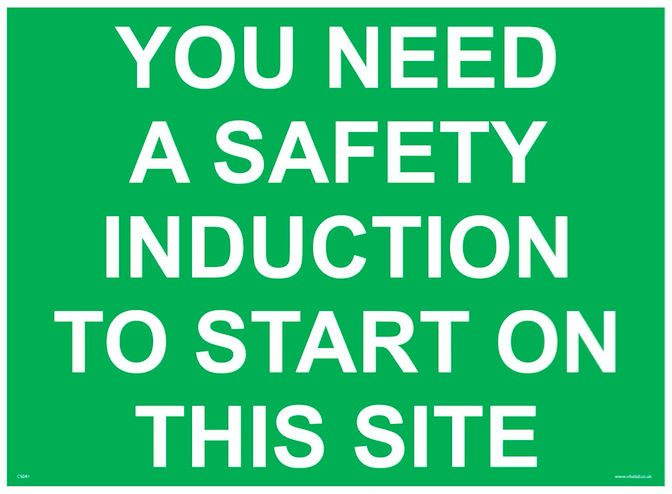Importance of Re-induction
By Colin Rice · Colin Rice Exploration Drilling Advisory · www.colinrice.co.za
We were recently made aware of a terrible accident that occurred after an employee came back from an extended break. The lessons learned from this very unfortunate accident are very relevant to us now, as we get back to work after the end of year shutdown. We would like to share the lessons from this accident with you - you may want to use this unfortunate but true story in your re-induction programs.
The story has been adapted and names changed to protect the injured party.
David’s first shift back at work
Today was David’s first shift back at work after his annual holiday to the coast. David had spent a relaxing four weeks in the warm sunshine with his wife and family, every day was perfect – no worries about work or the tasks that consumed his time off when at home.
David has worked as a master turner for nearly 15 years and was recently promoted to Supervisor of the specialist turning shop where repairs were carried out to very large diameter shafts, a job assigned to only the most experienced and meticulous turners. David arrived at work at 6:30 am, feeling relaxed and excited to get back to work. He changed into a clean set of overalls and set off to his 2 metre bed CNC lathe.
The nightshift turner had repaired a 320mm diameter shaft and David’s first job for the day was to remove the shaft from the lathe.
Just as David had done hundreds of times before, he used the remote control to swing the overhead crane directly over the bed of the lathe. A set of chain legs, 4 long ones and 4 shorter ones, were hanging from the crane hook. He lowered the crane hook and the chain legs so that he could secure the longer legs around the shaft for lifting.
David pushed the “up” button on the crane control to raise the shaft out of the lathe. As he pushed the button, the shaft lifted a short distance and then it stopped moving. David tried again and pushed the “up” button, he could hear the winch drum on the overhead crane taking load but the shaft would not move. “Damn it”, he thought, “this crane must be faulty”. Nonetheless, he kept pushing the “up” button and each time he could hear the winch straining even harder.
Unfortunately, what David did not realise was that as the shaft began to lift, the eye of one of the unused legs of chain had slid into a small gap between the bed and the headstock of the CNC. He did not know that as the winch increased the upward pull, the jammed chain leg was being subjected to increased load – an incredible, invisible tension was set up in the chain leg but David could not see it.
He had removed a shaft from the lathe hundreds of times before, so why would this time be any different?
David leaned slightly to his left to see if he could see what was stopping the shaft from moving. As he leant to his left he gave the “up” button one more push – the tension on the chain increased and at that instant the eye slid out of its trap between the bed of the lathe and the headstock.
The chain swung outwards and upwards in a circular arc at a speed that defied belief. As the eye of the chain approached a horizontal position in its upward arc, it impacted the left hand side of David’s jaw instantly shattering his jaw bone it into a hundred fragments. The chain hadn’t finished yet and as it continued its upward path it ripped into David’s cheek bone and then his eye socket.
David, did not know what had hit him, despite the incredible force of the impact he was conscious and stumbled towards the emergency exit to seek help. He managed to walk only a few paces before he collapsed – blinded and disfigured.
I have never worked in a workshop like the one that David worked in but I am informed that basic rigging practice requires that the unused legs of a set of lifting chains like the one that David used are fixed to the crane hook so that they cannot become entangled in the load as it is lifted.
David was a vastly experienced turner and he had always been meticulous in his work but it appears that on this particular day, he forgot to follow this procedure.
Why did David forget to tie up the unused legs? He had lifted a shaft out of the lathe so many times before - probably 150 to 200 times, so why would this time be different?
I suspect the reason was that David was still “on holiday” when he rigged the shaft for lifting– he arrived back at work after a four-week holiday and went straight to work - no re-induction, no pre-start briefing, no toolbox talk.
David worked for a large company with well developed safety management systems – “anyone, absent from their place of work for 14 consecutive days had to do a full induction on their return”. David should have done a re-induction on that first day but a crusher was down and production was being affected, so there was no time for an induction!
This summary is based on a true story – David survived but his injuries meant that he could no longer do the job that he loved.
As the new year starts up, every person in the industry will be coming back to work after a well deserved break with family and friends. Like David, many of them will still be thinking about their holiday when they get back to site. If you do not have the correct re-induction programs in place and you follow those programs correctly, we could have more Davids to write about next year.
In line with DrillSafe’s vision and purpose, please share the lessons from this short summary with your staff on and off site to ensure that everyone is properly prepared to conduct the tasks required.









Re-inductions at the start of the year are a critical part of your safety management system. This unfortunate accident illustrates what could go wrong if we ignore this.